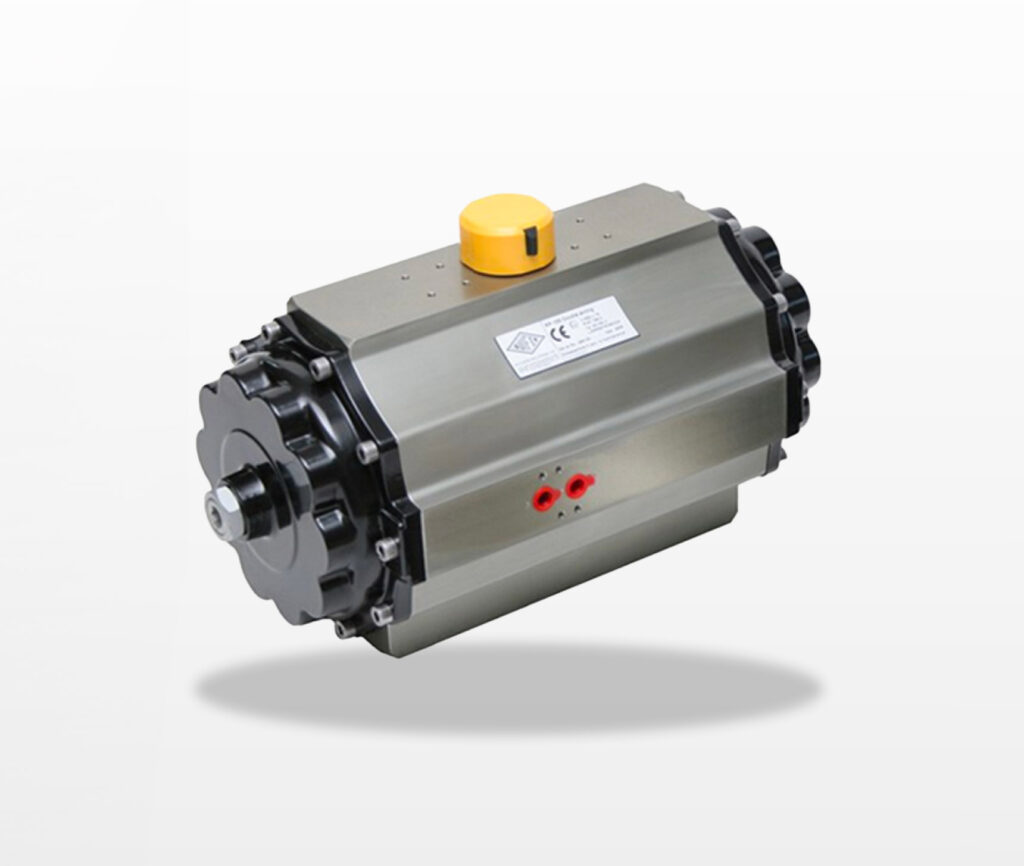Understanding Pneumatic Actuators
/ 2
Choosing the right pneumatic components can make a big difference to your bottom line. Proper maintenance and careful specification can increase service life, reduce downtime, and maximise operational efficiency.
With over 35 years of industry experience, we’ve put together a helpful guide to keep your operations running smoothly, whether in food processing, pharmaceuticals, waste management or heavy industry.
What are pneumatic actuators?
Pneumatic actuators convert compressed air pressure into mechanical movement and it is this movement that can be used to control machinery, move components, or perform a range of automated operations safely and efficiently.
Whether you need a simple linear cylinder or a sophisticated rotary drive, we can help you find the best solution for your operational needs.
Types of pneumatic actuators
Pneumatic actuators enable powerful, reliable, and cost-effective movement across a range of industrial applications. Pneumatic actuators come in two main varieties, linear and rotary. Each of these offers unique benefits depending on your application.
Linear pneumatic actuators
Linear actuators deliver straight-line motion and are typically used for pushing, lifting, clamping, or pressing. They’re often found in applications requiring controlled, high-force movement within a confined space, from automated production lines to precision dosing systems.
These actuators rely on clean, regulated air supplied via reliable air preparation systems and valves to function effectively. The quality of fittings and line connections also plays a crucial role in maintaining consistent force and responsiveness.
Rotary pneumatic actuators
Rotary actuators convert compressed air into rotational motion. They are commonly used in valve control, indexing mechanisms, and machinery that requires a turning force over a fixed angle.
Depending on the application, a vane-type actuator may offer the simplicity and precision needed for lighter-duty tasks. A rack-and-pinion design can handle more robust operations that involve higher torque.
Behind every effective rotary system is a well-engineered infrastructure, from quick-connect couplings that simplify installation and servicing to stainless steel components that withstand demanding conditions.
In larger facilities, these actuators often rely on integrated ring central systems that distribute air consistently across complex production zones, ensuring that performance remains dependable at every turn.
Maintenance for pneumatic actuators
Proactive maintenance ensures safety, reduces downtime, and maximises actuator lifespan.
Your maintenance schedule should include regular visual checks for air leaks, degraded seals, or irregular motion. Components must also be kept clean and properly lubricated using the right oils and lubricants for the specific environment and system design.
Waiting for a seal to fail rarely pays off; however, replacing them at scheduled intervals prevents downstream damage and unplanned stoppages.
Pneumatic actuators depend on clean, moisture-free air, as without the proper air preparation (which includes filtration, regulation, and occasional drainage), systems can become slow, inconsistent, or wear down quickly.
Investing in correctly sized filtration and drying equipment in high-demand settings is the best solution to ensure actuator responsiveness and overall system efficiency.
Keep your operations running smoothly
System reliability is crucial to success in complex industrial environments. Downtime costs money, disrupts schedules, and can compromise safety.
That’s why maintaining pneumatic and hydraulic systems isn’t just about sourcing the right parts; it’s about ongoing performance, prevention and peace of mind.
Expert on-site support ensures breakdowns are resolved quickly, keeping your productions moving and minimising costly delays. Planned maintenance helps prevent issues before they arise, improving system longevity and reducing the risk of unexpected failure.
When repairs or custom assemblies are needed, having access to local technical support means you won’t waste time waiting or troubleshooting alone. Regular testing and traceable certification give added confidence, especially in industries where compliance and performance are non-negotiable.
Why choose Fluid Power Services?
We have an extensive range of stock across our sites, including essential components like quick-connect couplings, push-in fittings, food and medical-grade parts, and a wide selection of valves, hose assemblies, clamps, and air tools.
If you’re looking to improve reliability or efficiency or design a new system from the ground up, speak with our team today.


